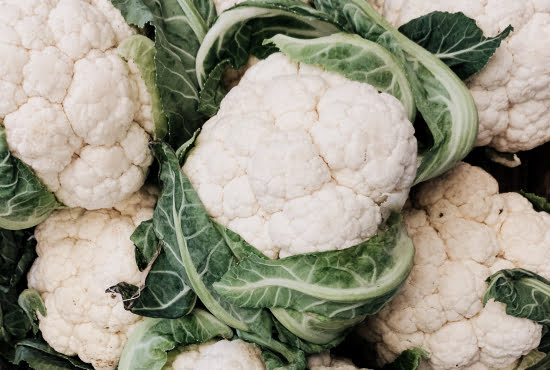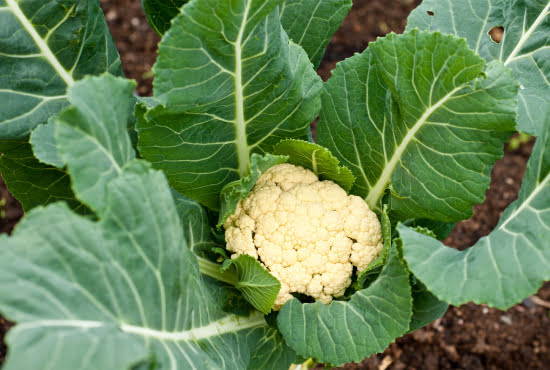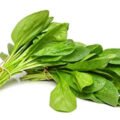Cauliflower - The Underrated Super Veggie
The non-starchy vegetable known as cauliflower should be more popular than it is. Sure, it looks like broccoli on the outside, but it has its flavour and texture when you bite into it that’s hard to beat. Cauliflower has its distinct taste that can stand up to bold seasoning, too, which makes it an ideal substitute in any recipe calling for broccoli. So, grab yourself some cauliflower the next time you’re at the grocery store or farmer’s market – you won’t regret it!
What is cauliflower?
Cauliflower is a cruciferous vegetable that looks like a white version of its cousin, broccoli. Like broccoli, the tightly bunched florets of cauliflower are made up of dozens of tiny flower buds that develop into miniature heads. Also, like broccoli, cauliflower tastes best when it’s fresh from your garden or farmers market and only lightly cooked. When we eat raw cauliflower in salads or snacks, it makes us feel good because it contains antioxidants called glucosinolates and nutrients such as vitamins C and K, fibre, and omega-3 fatty acids.

Health benefits of eating cauliflower
Cauliflower is a very good source of vitamin C, vitamin K, folate, and potassium. A single serving provides about 25% of your daily requirement for each nutrient. It is also rich in antioxidants including glutathione and beta-carotene. Cauliflower also contains kaempferol, quercetin, and rutin, which are all powerful anti-inflammatory compounds with properties that protect against disease and aging.
Another anti-inflammatory compound found in cauliflower called indole-3-carbinol (I3C) helps to detoxify harmful chemicals in our body which may lead to cancer. Research has shown that I3C can help inhibit cancer cell proliferation and induce apoptosis or death of abnormal cells. Another beneficial effect of I3C is its ability to lower levels of insulin growth factor-1 (IGF-1), which promotes cell division. In doing so, it prevents new blood vessels from forming around tumours and inhibits angiogenesis.
Overall, eating cauliflower may reduce your risk for certain types of cancers like prostate, breast, or ovarian cancer. Be sure you choose organic, when possible, as non-organic varieties are often heavily contaminated with pesticides due to their relatively large surface area exposed to air. Even worse, some varieties contain toxic compounds such as glyphosates not approved by FDA for use on food crops! Organic varieties don’t pose these risks!

Planting, Growing, and Harvesting Cauliflower
Cauliflower needs plenty of water and sunny weather and doesn’t do well in hot temperatures. Cauliflower is sensitive to cold weather, so plant it after your last frost date in spring. You can also purchase transplants at local nurseries or grocery stores. Plant them in full sun or partial shade in rich soil (add compost for best results) about 4 inches apart. Cauliflower takes about 80-120 days to mature; harvest when the flower buds are tight. Cut off any flowers that appear on your plants—this will give you larger cauliflowers! Give your cauliflowers space once they grow; otherwise, they’ll start flowering early and don’t produce large heads!
Great ways to eat more cauliflower
Raw cauliflower is great for topping pizzas, salads, and pasta dishes. Cauliflower rice (made by chopping up cauliflower florets and running them through a food processor or blender) makes an excellent base for the main dish. It can be used in stir-fry, steamed, or sautéed until it is just tender, with your favourite vegetables, sauces, and spices. Cauliflower also goes great with cheese. Many vegetarian kinds of cheese use cauliflower as an ingredient and some non-vegetarian varieties do too. Either way, cauliflower is a delicious addition to any meal!

How to cook with it
One of my favourite ways to prepare cauliflower is to roast it with salt, pepper, olive oil, and cumin. It takes very little time to roast, around 10 minutes on an individual tray in a preheated oven at 400°F (200°C). Once roasted, I like to chop it up and put it on sandwiches or enjoy it by itself as a quick snack. It’s also great mashed or pureed for use in quiches and soups. Cauliflower can be found in most grocery stores near broccoli and is usually sold individually wrapped in plastic.
Interesting facts about this super veggie
Cauliflower is an excellent source of vitamin C and it contains a significant amount of omega-3 fatty acids. As per one serving, half cup raw cauliflower contains 41 calories and 6 grams of carbohydrates. Half cup-cooked cauliflower will provide you with 77 calories. Consuming it in moderation also helps you to maintain a healthy body weight as cauliflower contains only 12 grams of digestible carbohydrates per 100 grams.
All these nutrients combined make Cauliflower a super veggie that can be your life companion! It can easily replace some other foods too (ex: instead of potatoes) as it contains a similar amount of nutrition with some health benefits! For example, water retention capacity: cauliflower takes more time to get digested by our stomach compared to potatoes; hence its fibbers do not let us retain excess water consumed while eating mashed potatoes! Which makes them perfect for people who are looking forward to losing weight or maintaining an ideal body shape.

